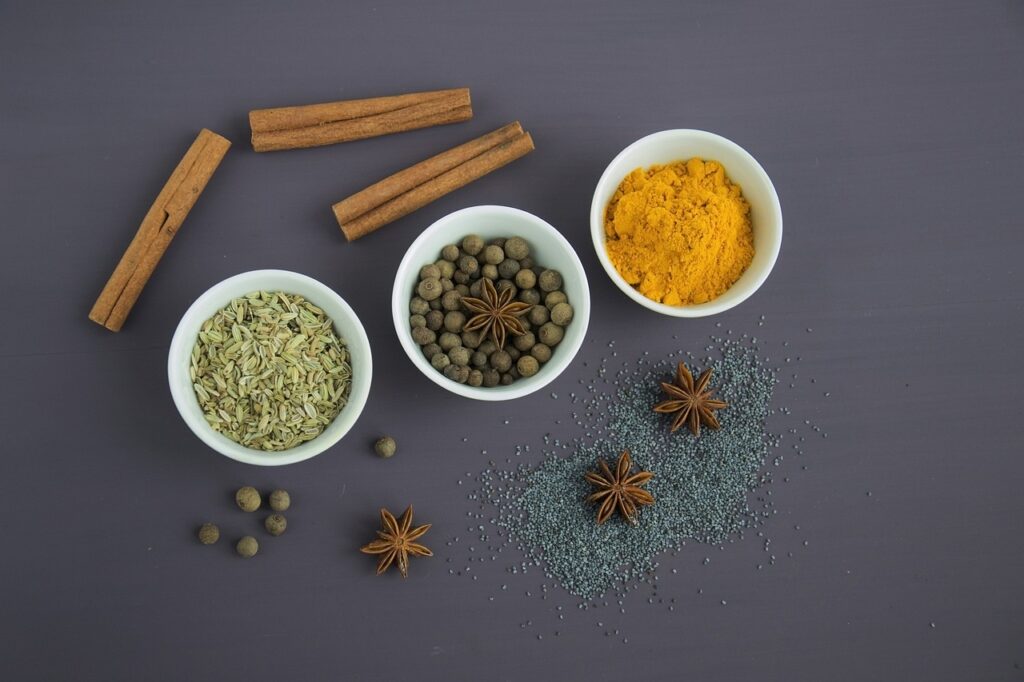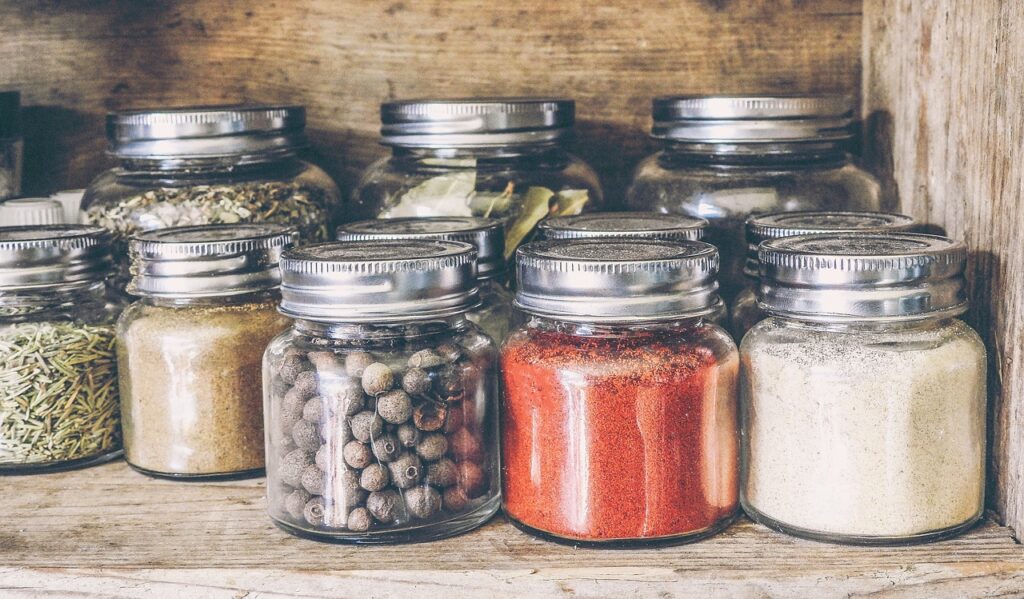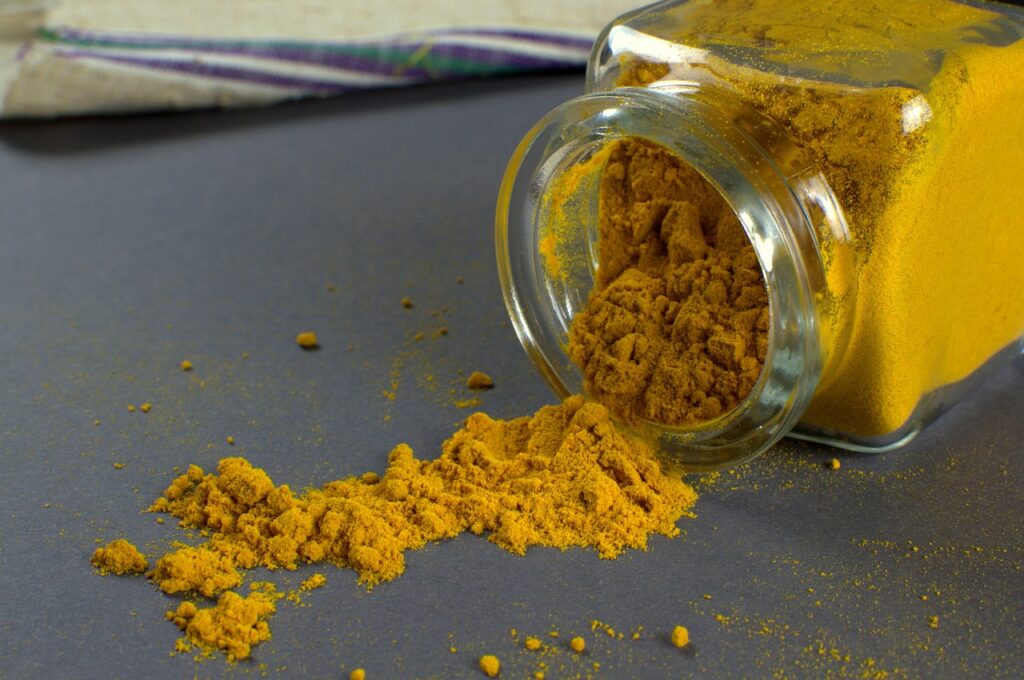Are your joints causing you pain and discomfort? Look no further than turmeric, a bright yellow spice that has been used for centuries in traditional medicine. Turmeric contains an active compound called curcumin, which has powerful anti-inflammatory properties that can help alleviate joint pain and reduce inflammation. In this article, we will explore the top ways you can incorporate turmeric into your daily routine to find relief from joint pain. From turmeric tea to turmeric supplements, we will guide you through the various methods of using this natural remedy to soothe your aching joints.
Turmeric as a Natural Anti-inflammatory
The Difference Between Acute and Chronic Inflammation
When it comes to inflammation, it’s important to understand the difference between acute and chronic inflammation. Acute inflammation is your body’s natural response to injury or infection. It is a temporary condition that helps protect and repair damaged tissues. On the other hand, chronic inflammation is long-term and can be harmful to your body. It is associated with conditions such as arthritis, autoimmune diseases, and chronic pain. Turmeric, a golden spice commonly used in Indian cuisine, has been found to have natural anti-inflammatory properties that can help reduce both acute and chronic inflammation.
How Turmeric Can Help Reduce Inflammation
Turmeric contains a compound called curcumin, which is responsible for its potent anti-inflammatory effects. Curcumin works by inhibiting the activity of enzymes and proteins that play a role in inflammation. It also acts as an antioxidant, protecting your body from free radicals that can contribute to inflammation. By incorporating turmeric into your diet or using it topically, you can harness its anti-inflammatory properties to reduce inflammation and relieve joint pain.
Using Turmeric to Alleviate Joint Pain
Turmeric can be used in various forms to alleviate joint pain. Whether you prefer using supplements, making turmeric tea or golden milk, or applying it topically, there are several options to choose from. Turmeric’s anti-inflammatory properties can help reduce swelling, stiffness, and pain in your joints. Additionally, it may also improve joint mobility and overall joint health. Let’s explore some of the different ways you can incorporate turmeric into your routine to find relief from joint pain.
Turmeric Supplements
Choosing the Right Turmeric Supplement
When it comes to choosing a turmeric supplement, it’s essential to look for one that contains a high concentration of curcumin. Curcumin supplements are available in various forms, including capsules, tablets, and powders. It’s important to check the product label and ensure that the supplement contains a standardized amount of curcumin. Look for supplements that are made from high-quality turmeric extract and do not contain unnecessary additives or fillers. Consulting with a healthcare professional or a registered dietitian can also help you make an informed decision about which turmeric supplement is best for you.
Recommended Dosage for Joint Pain
The recommended dosage of turmeric supplements can vary depending on the concentration of curcumin and the severity of your joint pain. Generally, a daily dosage of 500-2000 mg of curcumin is recommended for optimal anti-inflammatory effects. However, it’s important to remember that individual needs may vary. It’s always a good idea to consult with your healthcare provider before starting any new supplement regimen to ensure that it is safe and appropriate for you.
Potential Side Effects
While turmeric supplements are generally safe for most people, they may cause some mild side effects. These can include stomach upset, diarrhea, and nausea. It’s important to start with a lower dosage and gradually increase it to allow your body to adjust. If you experience any adverse reactions or have any concerns, it’s crucial to seek medical advice. Additionally, if you are taking any medications or have any underlying health conditions, it’s important to consult with your healthcare provider before starting a turmeric supplement.

Turmeric Tea
Recipe for Turmeric Tea
Turmeric tea is a delicious and soothing way to incorporate turmeric into your daily routine. Here’s a simple recipe to get you started:
Ingredients:
- 1 teaspoon turmeric powder
- 1 cup water
- 1 teaspoon honey or maple syrup (optional)
- Fresh lemon or ginger slices (optional)
Instructions:
- Boil the water in a small saucepan.
- Add the turmeric powder to the boiling water and stir well.
- Reduce the heat and let the tea simmer for about 10 minutes.
- Remove from heat and strain the tea into a cup.
- Add honey or maple syrup for sweetness if desired.
- Optional: Squeeze fresh lemon juice or add ginger slices for additional flavor.
- Enjoy your warm and comforting turmeric tea!
Benefits of Drinking Turmeric Tea for Joint Pain
Drinking turmeric tea regularly can provide numerous benefits for those suffering from joint pain. The curcumin in turmeric tea has been shown to have powerful anti-inflammatory effects, reducing joint swelling and pain. Turmeric tea can also improve joint mobility and flexibility, making it an excellent choice for individuals with arthritis or other joint-related conditions. Additionally, the warm and soothing nature of turmeric tea can help relax muscles and relieve tension in the joints, providing further relief. Adding a teaspoon of black pepper to your turmeric tea can enhance the absorption of curcumin, maximizing its effectiveness in relieving joint pain.
Turmeric Golden Milk
Making Turmeric Golden Milk
Turmeric golden milk, also known as turmeric latte, is a soothing and comforting beverage that can help relieve joint pain. Here’s an easy recipe to make your own:
Ingredients:
- 1 cup milk (dairy or plant-based)
- 1 teaspoon turmeric powder
- 1/2 teaspoon cinnamon powder
- 1/4 teaspoon ginger powder
- 1 teaspoon honey or maple syrup (optional)
Instructions:
- In a small saucepan, heat the milk over medium heat.
- Add the turmeric, cinnamon, and ginger powders to the milk.
- Whisk the mixture until well combined and the milk is heated through.
- Remove from heat and add honey or maple syrup for sweetness if desired.
- Pour the golden milk into a mug and enjoy its warm and comforting benefits.
How Golden Milk Can Relieve Joint Pain
Golden milk is not only a delicious beverage but also a natural way to relieve joint pain. The combination of turmeric, cinnamon, and ginger in golden milk provides a powerful anti-inflammatory and analgesic effect. These ingredients work together to reduce inflammation, alleviate pain, and improve joint mobility. Golden milk can be consumed daily to reap the benefits of its anti-inflammatory properties. The warm and soothing nature of golden milk can also help relax muscles and provide relief from muscle soreness often associated with joint pain.

Topical Application of Turmeric
Creating a Turmeric Paste
Applying turmeric topically to the affected joints can provide targeted relief from joint pain and inflammation. Creating a turmeric paste is a simple and effective way to harness its benefits. Here’s how to make a basic turmeric paste:
Ingredients:
- 1/4 cup turmeric powder
- 1/2 cup water
Instructions:
- In a small bowl, combine the turmeric powder and water.
- Mix well until a smooth paste is formed.
- If the paste is too thick, add a little more water to achieve the desired consistency.
- Your turmeric paste is now ready to be applied to the affected joints.
Applying the Paste to Affected Joints
To apply the turmeric paste, ensure that the affected joints are clean and dry. Gently massage the paste into the affected area in circular motions. Allow the paste to dry for about 20-30 minutes before rinsing it off with warm water. You may choose to cover the area with a bandage or cloth to prevent staining. Repeat this process daily or as needed to experience the soothing effects of turmeric on your joint pain.
Other Topical Uses for Turmeric
Turmeric’s anti-inflammatory and antioxidant properties make it beneficial for various other topical applications. For example, you can mix turmeric powder with honey or yogurt to create a nourishing face mask. The anti-inflammatory properties of turmeric can help reduce redness and inflammation, leaving your skin feeling revitalized. Additionally, turmeric can also be used as a natural exfoliant when combined with other ingredients such as chickpea flour or besan. By incorporating turmeric into your skincare routine, you can harness its numerous benefits for healthy and glowing skin.
Turmeric and Black Pepper
Why Black Pepper Enhances Turmeric’s Benefits
Black pepper contains a compound called piperine, which has been found to enhance the bioavailability and absorption of curcumin, the active compound in turmeric. Curcumin is not easily absorbed by the body, but when combined with piperine, its absorption is significantly increased. This means that adding a small amount of black pepper to your turmeric preparations can enhance its anti-inflammatory effects and maximize its benefits in relieving joint pain.
How to Combine Turmeric and Black Pepper for Joint Pain Relief
To combine turmeric and black pepper for joint pain relief, you can simply add a pinch of black pepper to any turmeric preparation, such as tea, golden milk, or a turmeric paste. By doing so, you can ensure that you are getting the most out of the curcumin in turmeric and experiencing its anti-inflammatory effects to the fullest.

Turmeric in Cooking
Incorporating Turmeric into Your Meals
One of the easiest ways to include turmeric in your daily routine is by incorporating it into your meals. Turmeric adds a warm and earthy flavor to dishes and can be used in a variety of cuisines. It pairs well with vegetables, grains, meats, and seafood, allowing you to experiment with different flavor combinations. You can add a pinch of turmeric to soups, stir-fries, curries, roasted vegetables, rice dishes, and even smoothies. By incorporating turmeric into your meals, you can enjoy its anti-inflammatory properties and promote joint health from the inside out.
Recipes for Joint Pain Relief
Here are a few recipes that feature turmeric as a key ingredient for joint pain relief:
-
Turmeric Roasted Cauliflower: Toss cauliflower florets with olive oil, turmeric, cumin, salt, and pepper. Roast in the oven until golden and tender. Serve as a side dish or add to salads and grain bowls.
-
Turmeric Lentil Soup: Sauté onions, garlic, and ginger in olive oil. Add red lentils, turmeric, cumin, coriander, paprika, salt, and vegetable broth. Simmer until lentils are cooked through. Blend half of the soup for a creamy texture.
-
Turmeric Smoothie: Blend pineapple chunks, banana, spinach, coconut milk, turmeric, ginger, and a pinch of black pepper for a refreshing and anti-inflammatory smoothie.
Feel free to get creative with these recipes by adding your favorite herbs, spices, and vegetables to further enhance the flavor and nutritional value.
Turmeric and Ginger
The Synergistic Effects of Turmeric and Ginger
Both turmeric and ginger are renowned for their potent anti-inflammatory and antioxidant properties. When combined, they can have synergistic effects, providing even greater benefits for joint pain relief. Ginger contains compounds called gingerols, which have been shown to have anti-inflammatory effects and relieve pain. The combination of turmeric and ginger in teas, smoothies, or other preparations can help reduce joint inflammation, alleviate pain, and improve overall joint health.
Joint Pain Relieving Tea Recipe
Here’s a simple tea recipe that combines the powers of both turmeric and ginger to relieve joint pain:
Ingredients:
- 1 teaspoon turmeric powder
- 1 teaspoon ginger powder
- 1 cup water
- 1 teaspoon honey or maple syrup (optional)
- Lemon slices (optional)
Instructions:
- Bring the water to a boil in a small saucepan.
- Add the turmeric powder and ginger powder to the boiling water and stir well.
- Reduce the heat and let the tea simmer for about 10 minutes.
- Remove from heat and strain the tea into a cup.
- Add honey or maple syrup for sweetness if desired.
- Optional: Squeeze fresh lemon juice or add lemon slices for a refreshing twist.
- Sit back, relax, and enjoy the soothing effects of this joint pain relieving tea.

Turmeric Essential Oil
Using Turmeric Essential Oil for Joint Pain
Turmeric essential oil is another way to harness the anti-inflammatory and pain-relieving properties of turmeric. It contains high concentrations of curcumin and other beneficial compounds found in the turmeric plant. When applied topically, turmeric essential oil can help reduce joint pain, swelling, and stiffness. It can also improve blood circulation and stimulate the immune system, promoting the body’s natural healing process.
Massage Oil Recipe
To create a soothing massage oil using turmeric essential oil, follow this simple recipe:
Ingredients:
- 2 tablespoons carrier oil (such as coconut oil or almond oil)
- 10 drops turmeric essential oil
Instructions:
- In a small bowl, combine the carrier oil and turmeric essential oil.
- Mix well until the oils are thoroughly blended.
- Gently massage the oil onto the affected joints, using circular motions.
- Continue massaging for a few minutes to allow the oil to penetrate the skin.
- Repeat this process regularly for optimal results.
Remember to conduct a patch test before using turmeric essential oil topically to ensure that you do not have any adverse reactions or allergies.
Turmeric Poultice
Creating a Turmeric Poultice
A turmeric poultice is a traditional remedy for soothing joint pain and inflammation. Creating a poultice is a simple process that involves making a paste and applying it directly to the affected joints. Here’s how to create a turmeric poultice:
Ingredients:
- 2 tablespoons turmeric powder
- 2-3 tablespoons warm water
- Clean cloth or gauze
Instructions:
- In a small bowl, combine the turmeric powder and warm water.
- Mix well until a thick paste is formed.
- Spread the paste onto a clean cloth or gauze, making sure it is evenly distributed.
- Fold the cloth or gauze to enclose the paste and create a poultice.
- Apply the poultice directly to the affected joints and secure it in place with a bandage or cloth.
- Leave the poultice on for about 30 minutes to an hour.
- Remove the poultice and rinse the area with warm water.
Applying the Poultice to Affected Joints
Before applying the turmeric poultice, clean and dry the affected joints. Gently apply the poultice to the joints and secure it in place with a bandage or cloth. Allow the poultice to remain on the joints for the recommended duration. The turmeric paste will gradually dry, and you may experience a mild warming sensation. This is a normal reaction to the active compounds in turmeric. After removing the poultice, rinse the area with warm water and observe the soothing effects it has on your joint pain.
In conclusion, turmeric offers a natural and holistic approach to relieving joint pain. Whether you choose to incorporate it into your diet, use it topically, or enjoy it in the form of teas or supplements, turmeric’s anti-inflammatory and pain-relieving properties can help improve joint health and reduce discomfort. Remember to consult with a healthcare professional before making any significant changes to your routine, especially if you have any underlying health conditions or are taking medications. Embrace the power of turmeric and discover the relief it can bring to your joints.
